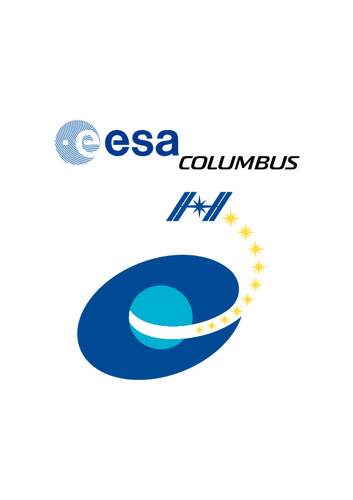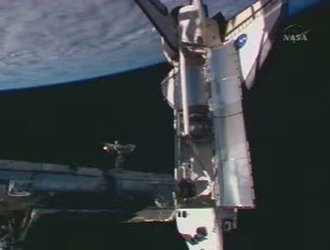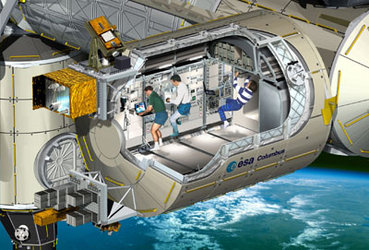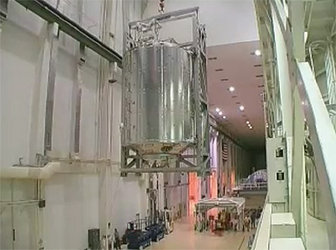Endeavour brings ESA astronaut back to earth
ESA PR 18-2008. Returning from its 16-day STS-123 mission to the International Space Station, NASA’s Shuttle Endeavour has safely returned to earth, with a crew of seven onboard, including ESA astronaut Léopold Eyharts of France, who spent nearly 49 days in space on a mission to dock and commission Europe’s Columbus laboratory.
Landing took place at 01:39 CET on 27 March, at the Kennedy Space Center shuttle landing strip at Cape Canaveral, Florida.
Léopold Eyharts (50) had been dispatched to the ISS on the previous shuttle flight on Atlantis on 7 February. That STS-122 mission included another ESA astronaut, Hans Schlegel of Germany. On 10 February, shortly after Atlantis had docked with the ISS, Eyharts was inducted in the resident ISS crew, trading places with NASA astronaut Dan Tani as a member of the Expedition 16 increment alongside NASA’s Peggy Whitson and Russian astronaut Yuri Malenchenko.
First onboard Columbus

One of Eyharts’ early tasks on board was to support the docking of the Columbus laboratory, firstly at the commands of the Station’s robotic arm to extract the European module from the shuttle cargo bay and later by activating the motorised bolts from inside the Harmony node module to secure the junction. “The European Columbus module is now part of the ISS,” he announced to mission control in Houston, Moscow and Munich at 21:44 UT (22:44 CET) on 11 February once the docking was complete.

On the following day, Eyharts became the first astronaut to ingress the Columbus module in orbit. He wore a mask and goggles and carried a flashlight to check the laboratory’s status before the atmosphere was scrubbed and the lights were turned on. As soon as Columbus was cleared for access, together with Hans Schlegel and other crew members, he immediately started reconfiguration and activation of the module. Eyharts remained onboard the ISS when Atlantis departed with Schlegel to return to earth.
Léopold Eyharts spent 44 days onboard the ISS and devoted a large part of his time to activation and checking of the Columbus module and its racks in order to be able start up actual science experimentation inside the laboratory. As an ISS crew member, he also contributed to certain international science experiments and to maintenance of the Station’s equipment.
Supporting international expansion of the ISS

When Endeavour docked with the ISS on 13 March, Eyharts swapped crew assignments again, this time with NASA astronaut Garrett Reisman, and joined the crew of the STS-123 mission.
As a qualified mission specialist in robotics, Eyharts contributed to the STS-123 assembly mission as operator of the Station’s robotic arm alongside Reisman and Bob Behnken, another NASA mission specialist. Together, they added a new module to the ISS – the Japanese Experiment Logistics Module, Pressurised Section (JLP) – and supported the assembly and activation of the Special Purpose Dextrous Manipulator, a Canadian-built two-armed robotic telemanipulator also known as “Dextre”. The SPDM is designed to conduct extra-vehicular activities that would have previously required spacewalks.
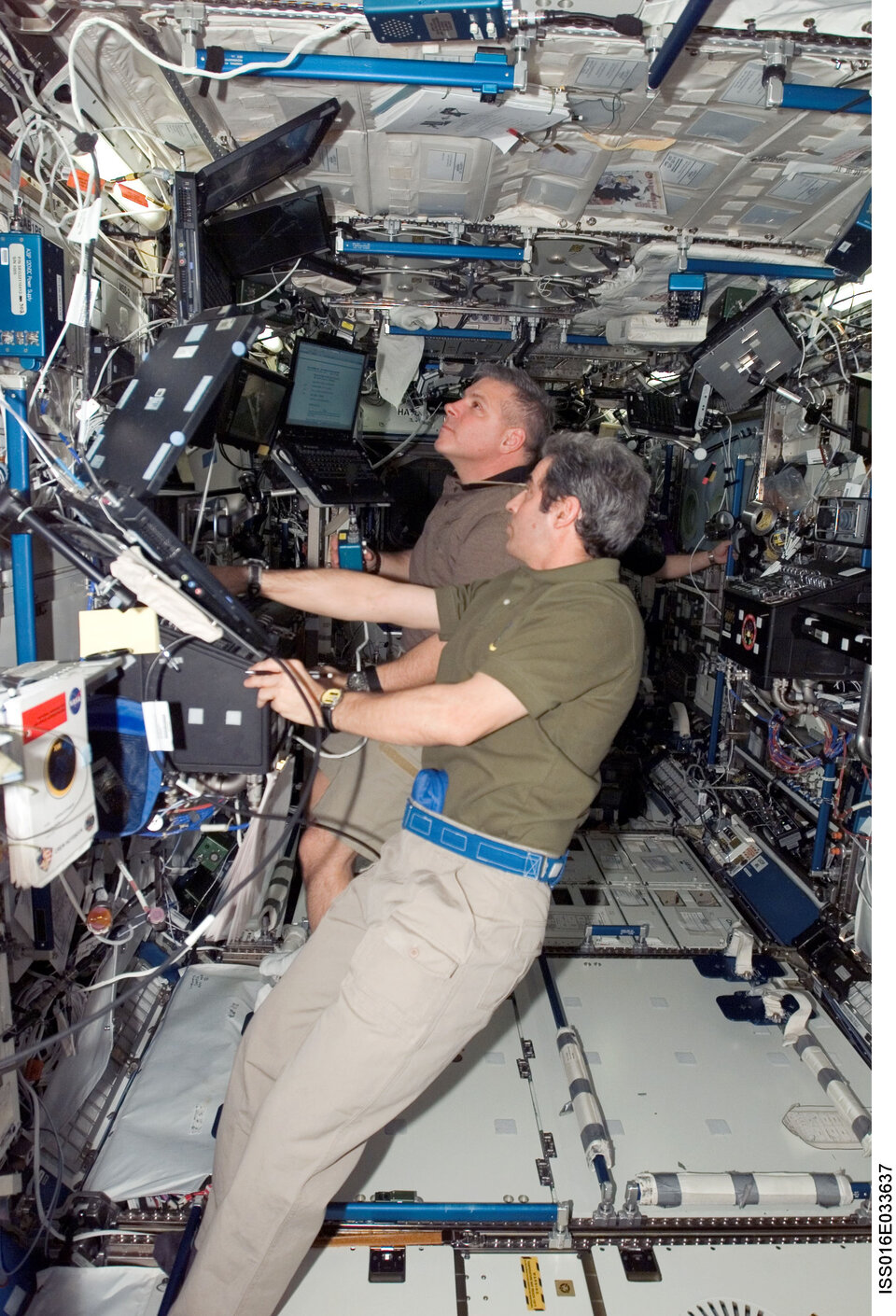
Léopold Eyharts left the ISS onboard Endeavour on 25 March. He brought back with him the very first results of an experiment carried onboard Columbus. Commissioning of the European laboratory module will be finalised by the resident ISS crew of the Expedition 16 and 17 increments.
Eyharts is the second ESA astronaut to have become part of the resident ISS crew, Thomas Reiter having spent six months onboard in 2006. This was Eyharts’ second mission to a space station, having already flown to the Russian Mir station back in 1998.
More ESA astronauts to join resident ISS crew
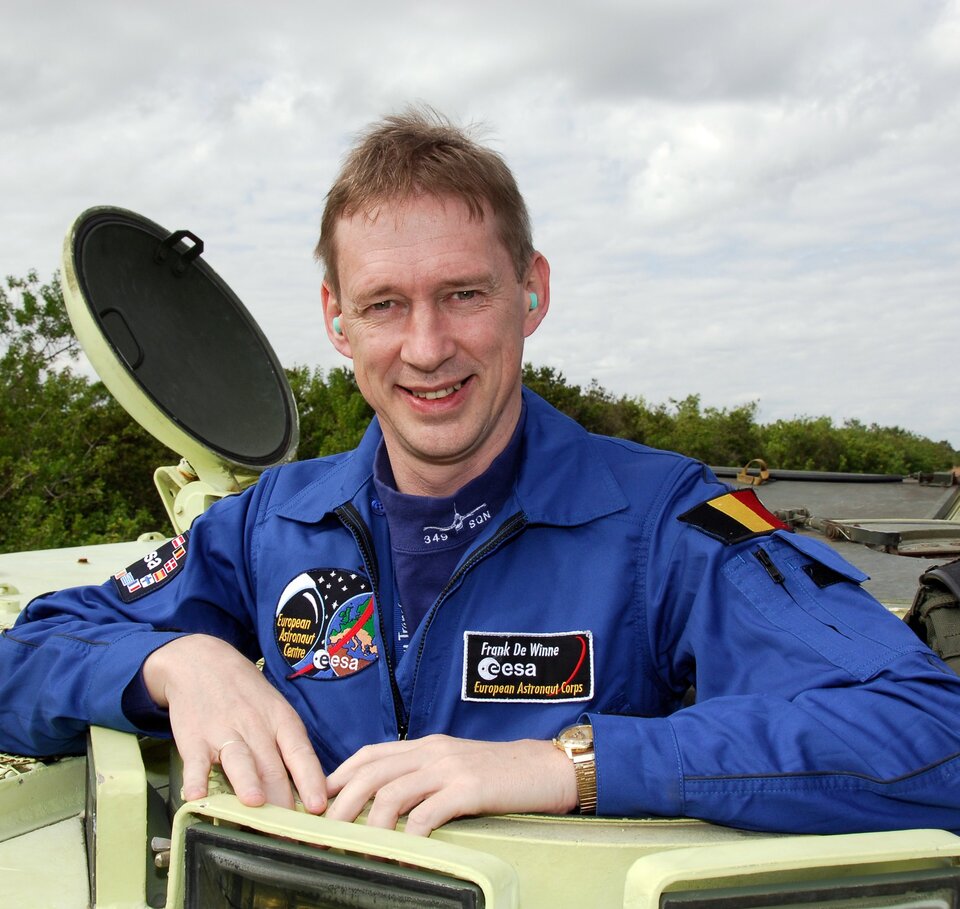
With Columbus now attached, such flights will be carried out more often. The next ESA astronaut to go – in 2009 – will be Frank de Winne of Belgium, with André Kuipers of the Netherlands acting as backup.
Meanwhile, ESA will keep up the momentum of its contributions to the ISS with the upcoming docking of the Jules Verne ATV, ESA’s first Automated Transfer Vehicle, scheduled for 3 April, and the launching of more science experiments to be conducted inside Columbus on future shuttle missions.
Columbus is designed to support some 100 experiments per year over ten years. These experiments address all the major research areas: biology, exobiology, human physiology, fluid physics, fundamental physics, technology, solar physics. More European-built elements are also under preparation to be launched to the ISS over the coming years, notably the European Robotic Arm, the Node 3 module and the Cupola observation post.



